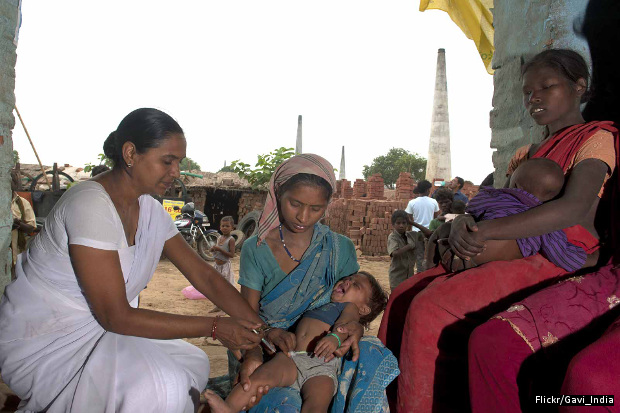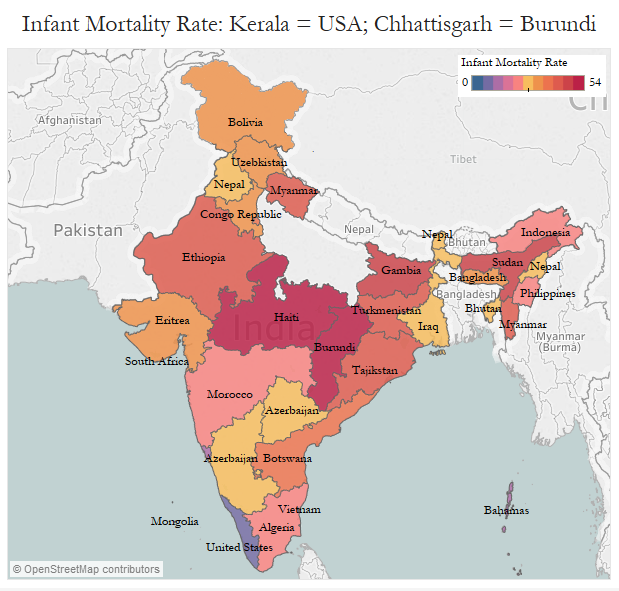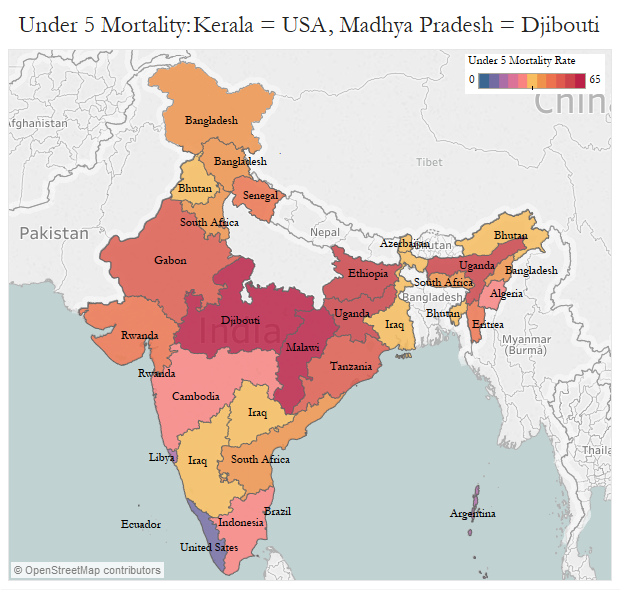Kerala = New Zealand; Many States Worse Than African Nations in Infant, Under-5 Mortality
India's 16-point reduction in its infant mortality rate (IMR) over a decade to 2015 is revealing wide variation nationwide and illustrates how far many states lag the national average, according to an IndiaSpend analysis of data from the latest National Family Health Survey (NFHS-4).
India now registers 41 deaths per 1,000 live births, but while Kerala has an IMR of six, at par with United States, New Zealand and Cuba, Chhattisgarh with an IMR of 54 is the worst in the country, at par with strife-torn Burundi. Our chart below compares the IMR of Indian states with countries.
Source: National Family Health Survey, 2015-16, World Bank
India has not reached its 2015 millennium development goal of reaching an IMR of 27, IndiaSpend reported on January 9, 2017.
In under-five mortality rate (U5MR), India has seen a 24-point reduction to 50 deaths per 1,000 live births from 74 in 2005-06. Kerala with it U5MR of seven is at par with United States while Madhya Pradesh has the worst figure (65), at par with east African country Djibouti. Our chart below compares the U5MR of Indian states with countries.
Source: National Family Health Survey, 2015-16, World Bank
The improvement in IMR is likely linked to government interventions, including institutional deliveries and providing iron and folic-acid tablets to pregnant women, rising incomes and better living circumstances since economic liberalisation in 1991, IndiaSpend reported.
(Salve is an analyst with IndiaSpend. Yadavar is principal correspondent with IndiaSpend.)
We welcome feedback. Please write to respond@indiaspend.org. We reserve the right to edit responses for language and grammar.
__________________________________________________________________
“Liked this story? Indiaspend.org is a non-profit, and we depend on readers like you to drive our public-interest journalism efforts. Donate Rs 500; Rs 1,000, Rs 2,000.”





